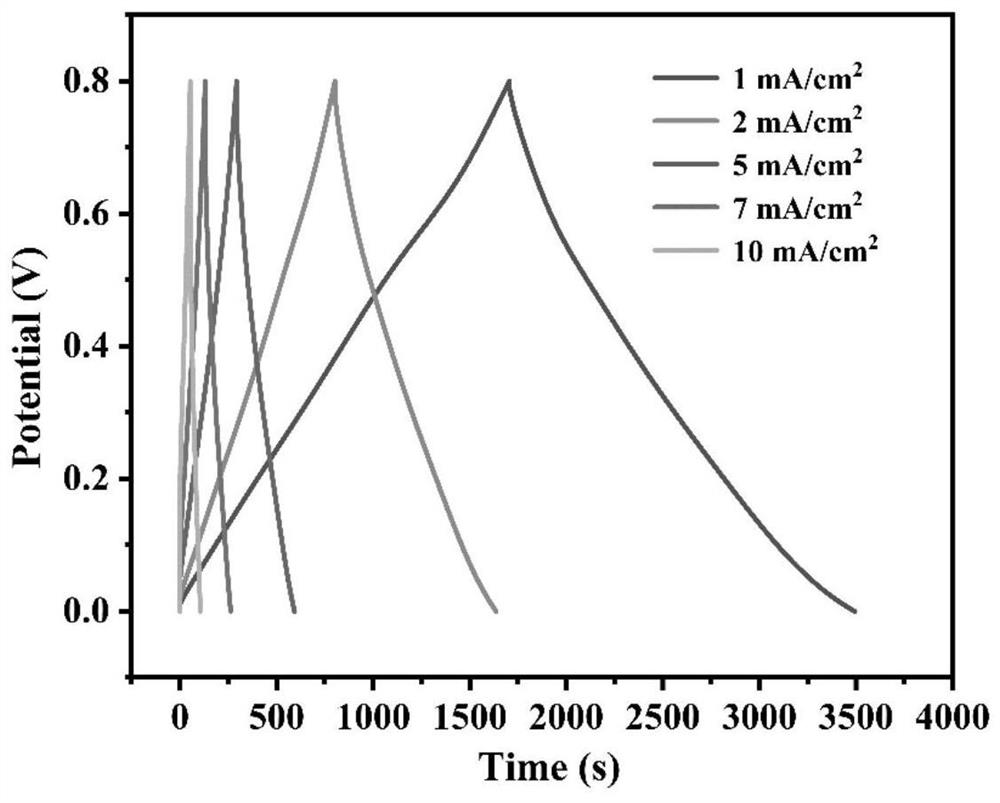A kind of preparation method of isotropic conductive paper
An isotropic, conductive paper technology, applied in the field of composite materials, can solve problems such as complex preparation process and poor mechanical strength of electrodes, and achieve the effects of wide sources, enhanced mechanical properties, and guaranteed stability
- Summary
- Abstract
- Description
- Claims
- Application Information
AI Technical Summary
Problems solved by technology
Method used
Image
Examples
Embodiment 1
[0043] (1) The balsa wood is sliced along the growth direction to obtain a wood substrate with a thickness of 0.4 mm and a length and width of 15×10 mm.
[0044] (2) The wood substrate obtained in step (1) is repeatedly rinsed with deionized water, and then placed at room temperature for 24 hours for later use.
[0045] (3) put the sample in step (2) into 2.5mol / L NaOH and 0.4mol / L Na 2 SO 3 The mixed aqueous solution was heated at 85 °C in a water bath for 2 h.
[0046] (4) Wash the part of the delignified wood substrate in step (3) with ethanol and deionized water in turn, and put the sample into FeCl 3 The solution was placed in a beaker, and then transferred to a vacuum drying oven for vacuum immersion for 2 h.
[0047] (5) Wash the sample obtained in step (4) with deionized water to remove excess solution, and freeze-dry it at -45° C. for 24 hours.
[0048] (6) The sample obtained in step (5) was cold-pressed with a cold press for 7 min, and the pressure was 1 Mpa. ...
Embodiment 2
[0052] (1) The poplar is sliced along the growth direction to obtain a wood substrate with a thickness of 0.4 mm and a length and width of 15×10 mm.
[0053] (2) The wood substrate obtained in step (1) is repeatedly rinsed with deionized water, and then placed at room temperature for 24 hours for later use.
[0054] (3) put the sample in step (2) into 2.5mol / L NaOH and 0.4mol / L Na 2 SO 3 The mixed aqueous solution was heated at 85 °C in a water bath for 2 h.
[0055] (4) Wash the part of the delignified wood substrate in step (3) with ethanol and deionized water in turn, and put the sample into FeCl 3 The solution was placed in a beaker, and then transferred to a vacuum drying oven for vacuum immersion for 2 h.
[0056] (5) Wash the sample obtained in step (4) with deionized water to remove excess solution, and freeze-dry it at -45° C. for 24 hours.
[0057] (6) The sample obtained in step (5) was cold-pressed with a cold press for 7 min, and the pressure was 1 Mpa.
[...
Embodiment 3
[0061] (1) The paulownia wood is sliced along the growth direction to obtain a wood substrate with a thickness of 0.4 mm and a length and width of 15×10 mm.
[0062] (2) The wood substrate obtained in step (1) is repeatedly rinsed with deionized water, and then placed at room temperature for 24 hours for later use.
[0063] (3) put the sample in step (2) into 2.5mol / L NaOH and 0.4mol / L Na 2 SO 3 The mixed aqueous solution was heated at 85 °C in a water bath for 2 h.
[0064] (4) Wash the part of the delignified wood substrate in step (3) with ethanol and deionized water in turn, and put the sample into FeCl 3 The solution was placed in a beaker, and then transferred to a vacuum drying oven for vacuum immersion for 2 h.
[0065] (5) Wash the sample obtained in step (4) with deionized water to remove excess solution, and freeze-dry it at -45° C. for 24 hours.
[0066] (6) The sample obtained in step (5) was cold-pressed with a cold press for 7 min, and the pressure was 1 M...
PUM
| Property | Measurement | Unit |
|---|---|---|
| thickness | aaaaa | aaaaa |
Abstract
Description
Claims
Application Information
 Login to View More
Login to View More - R&D
- Intellectual Property
- Life Sciences
- Materials
- Tech Scout
- Unparalleled Data Quality
- Higher Quality Content
- 60% Fewer Hallucinations
Browse by: Latest US Patents, China's latest patents, Technical Efficacy Thesaurus, Application Domain, Technology Topic, Popular Technical Reports.
© 2025 PatSnap. All rights reserved.Legal|Privacy policy|Modern Slavery Act Transparency Statement|Sitemap|About US| Contact US: help@patsnap.com

